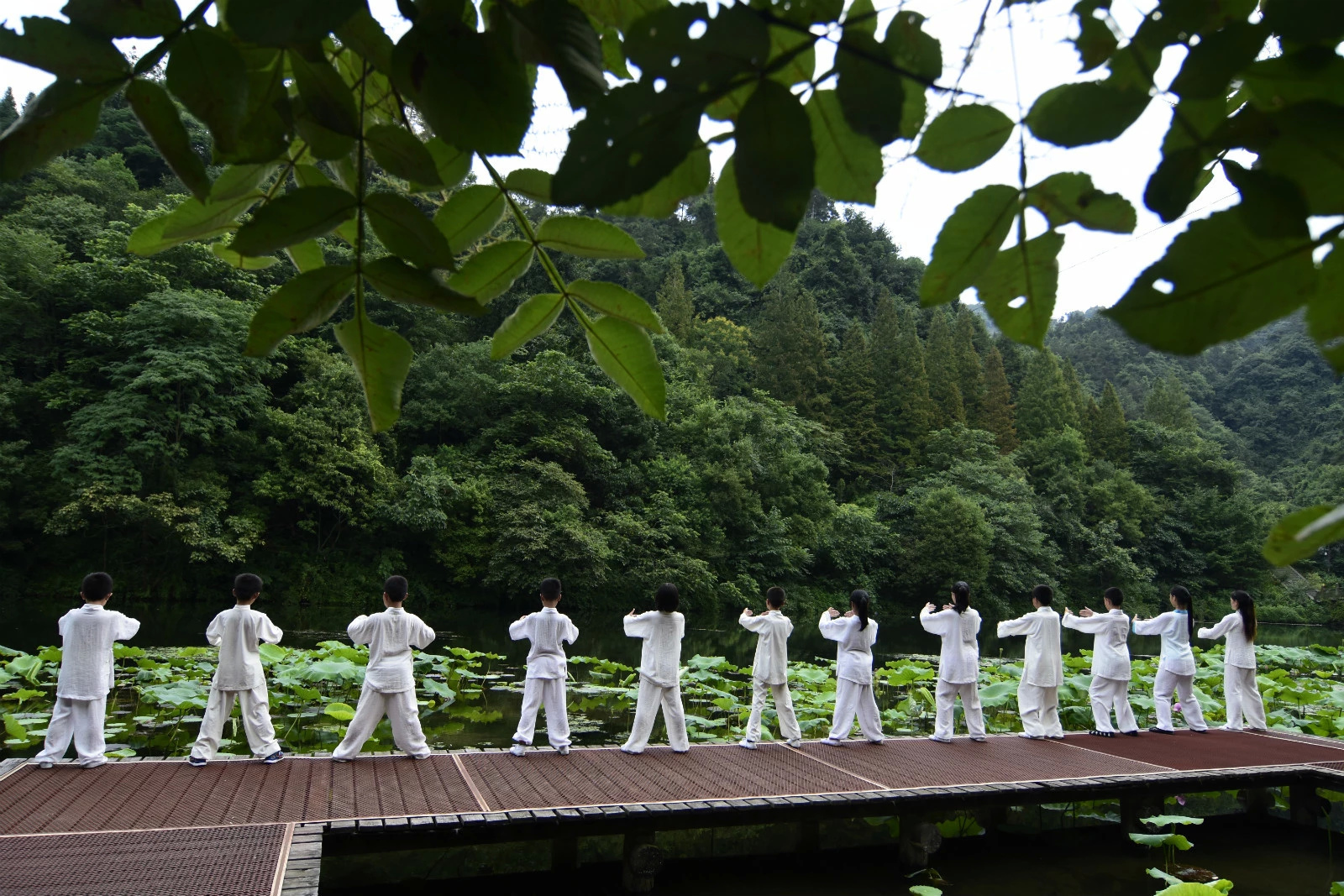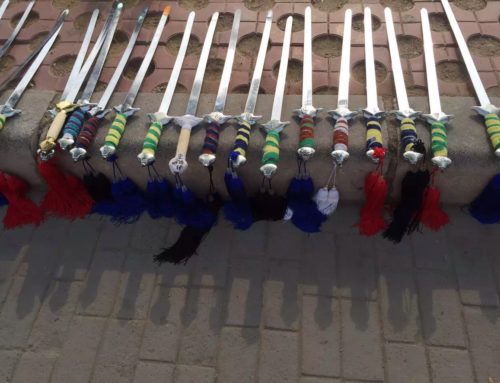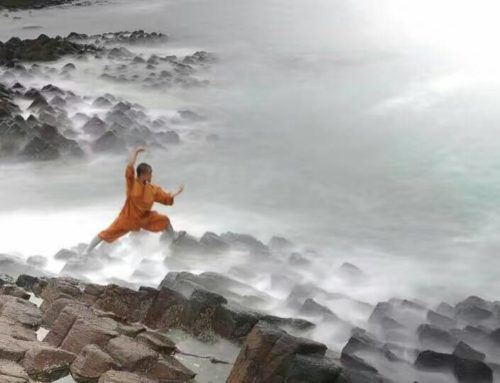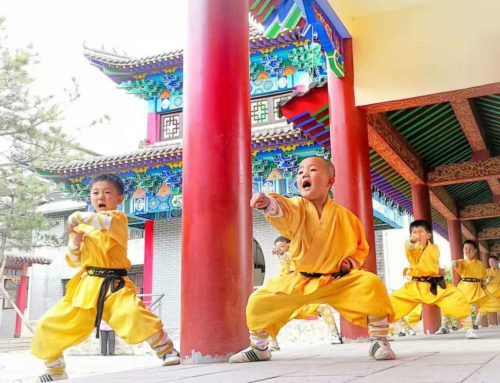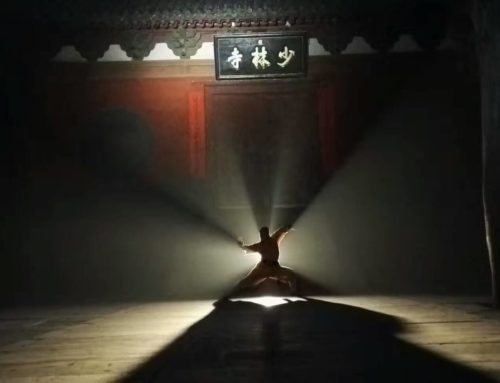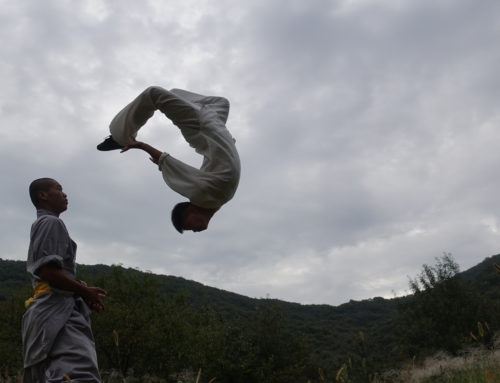Hello everyone !
I prepared a little tutorial but this time a little more theoretical.
I know that there are all levels among our readers, so I will try to explain with very simple words and in the most clear and precise way (maybe for some purists the terms will not be accurate but for those who wish to have the terms in Chinese, the very scientific point of view … you are welcome here for further explanations)
1. Introduction
In this tutorial I will explain the 1st ji ben gong (basic exercises) that we teach to those who want to learn Tai Ji Quan.
This is valid for most styles, Master Zhang (Shi Heng Ye) is our specialist in Tai Ji Quan, he practices many different styles and continues to study others … He explains that all styles share the same basis with a few different interpretations and variations, so it is good to see all these interpretations and to draw the good points of each.
My explanations today will therefore be based on a very broad point of view so that all practitioners of Tai Ji Quan whatever their styles can find their account.
We consider Tai Ji Quan in 2 main aspects the side “yang sheng” (health – well being, the best known in the West) and the martial side. These 2 aspects are complementary.
We will see how to perform this basic exercise, what it brings from a martial point of view …
There are very good articles on the health side, well being … So I will stay mainly on this very martial side and you learn to use it in your external martial arts … because we must not forget that the external arts and internal do not go one without the other.
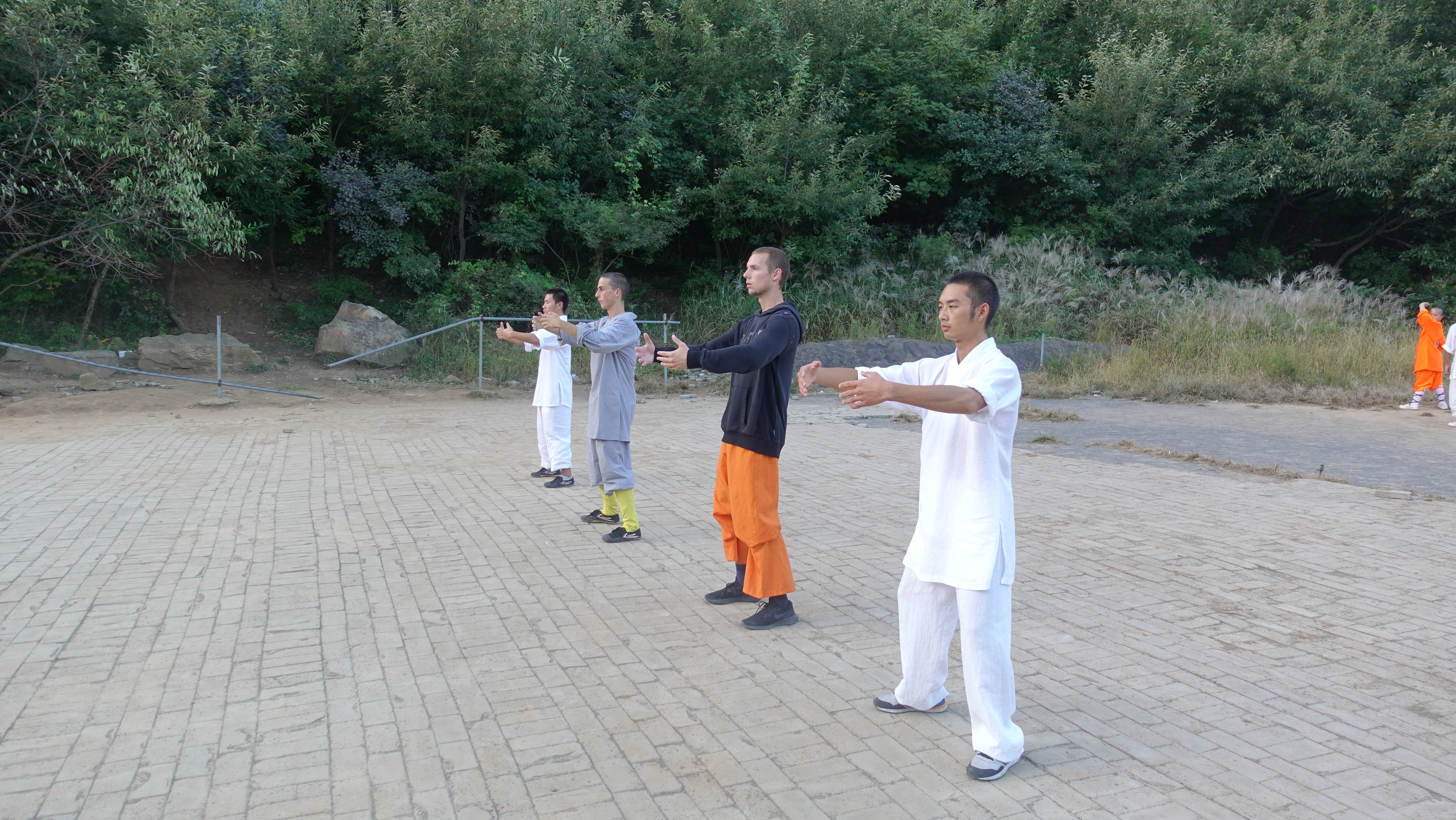
2. 浑圆桩 Hun Yuan Zhuang
This is his name, there are many possible translations …
I will rather give you an interpretation by the fact of working a force / energy released by the entirety of its body, I will call it by my own words “circular forces” it is not the exact term but it will allow to all to understand more easily.
Now, let us ask the question of how is formed the representation of yin and yang, we can divide it into 3:
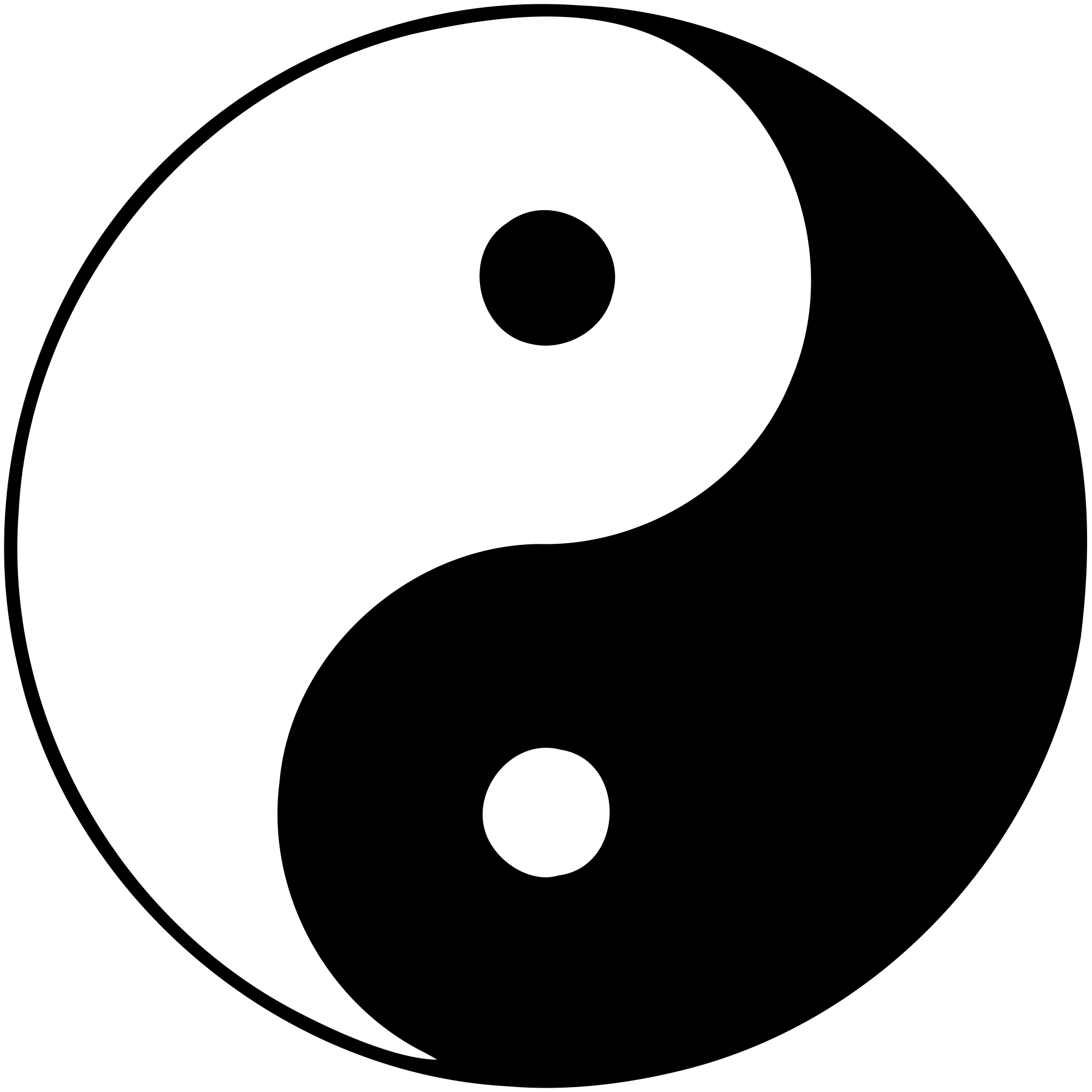
– The circle that contains yin and yang
– The yin
– The yang
It can be interpreted as Tai Ji is also composed of 3 essential Ji Gong Gong that must be transcribed in each of its forms.
Today, we will be interested in the first who is The circle. It is always considered the first because without the circle, you can not build yin and yang.
3. Le Mouvement
This Ji Ben Gong is extremely simple because it is indeed a simple posture.
This posture, most practitioners of Tai Ji Quan know very well, it is often called the posture of the tree (Zhan Zhuang).
Here are some pictures of the posture:
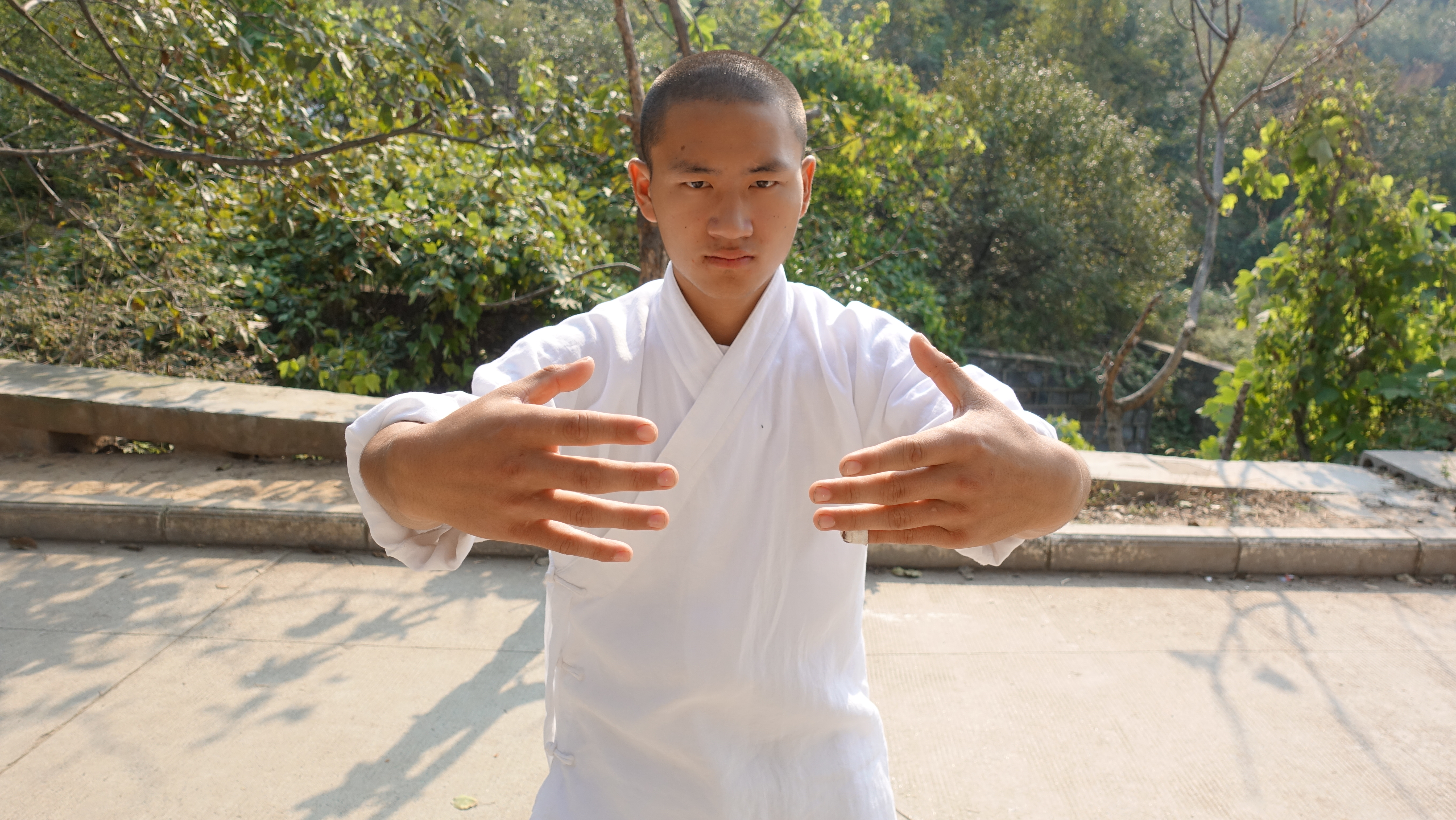
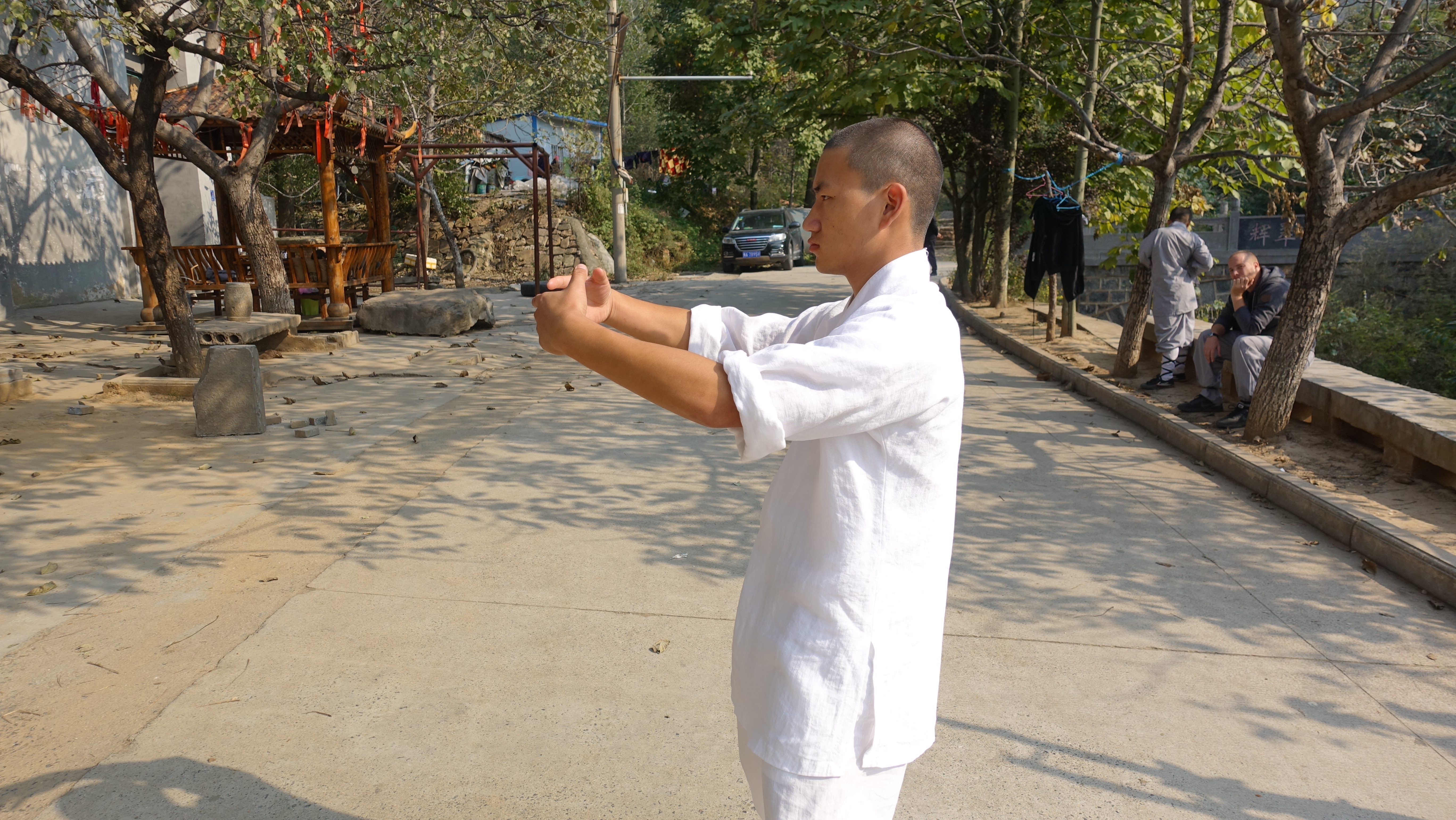
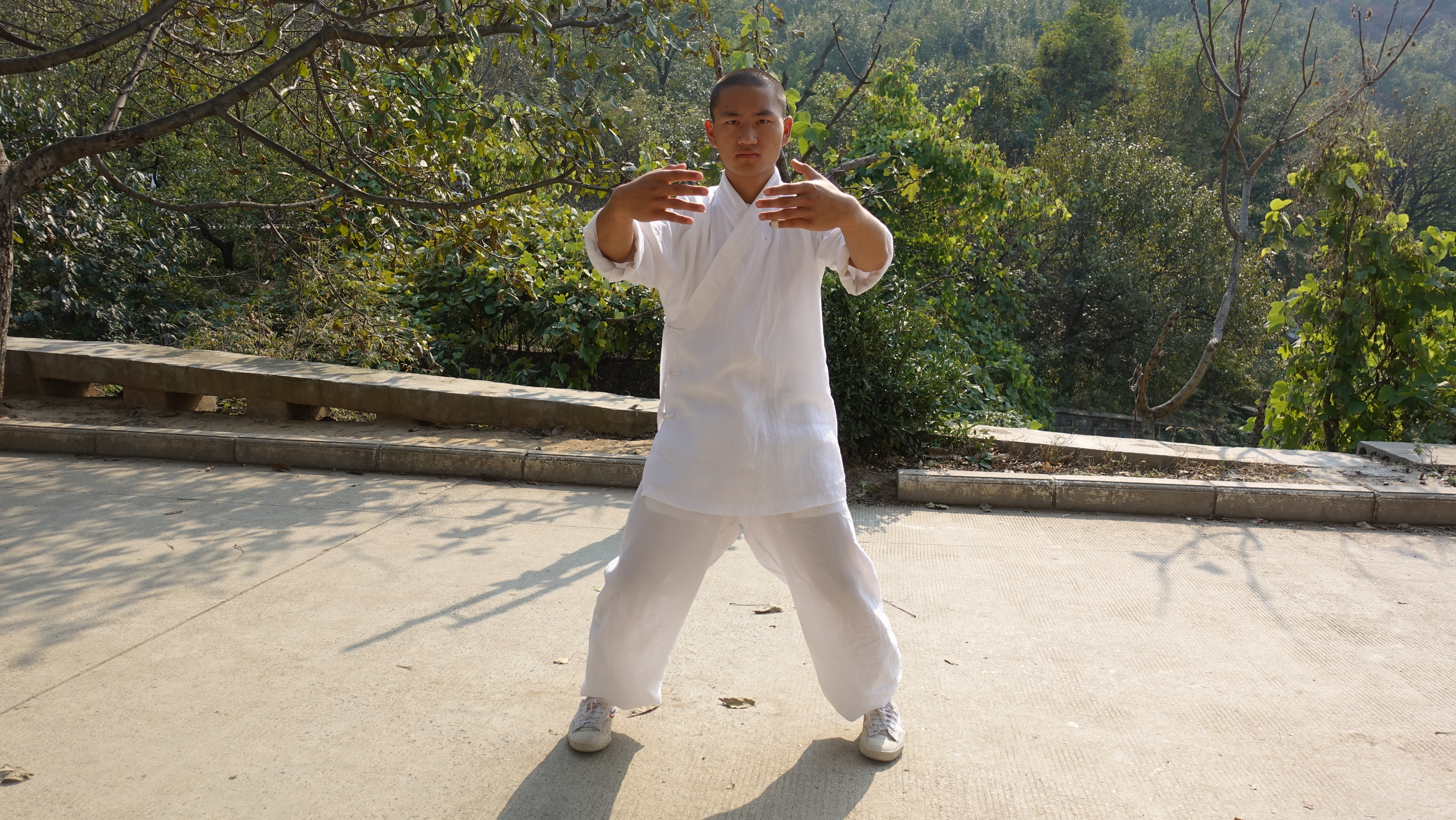
Since this Ji Ben gong consists of simply holding a posture, it must be done correctly:
– The body must be released
– Open and release the joints
– Tuck your chest
– Feet slightly wider than the pelvis and slightly open to the outside
– Legs flexed
– Hips relaxed and open basin
– Arms flexed at shoulder height
– The head should be hung as if pulled by a wire
– We stick the tongue to the upper palace
So now that we know how to put ourselves in the position, we will mainly see how to work this position so as to develop this “circular force”.
I drew on these photos 3 circles:
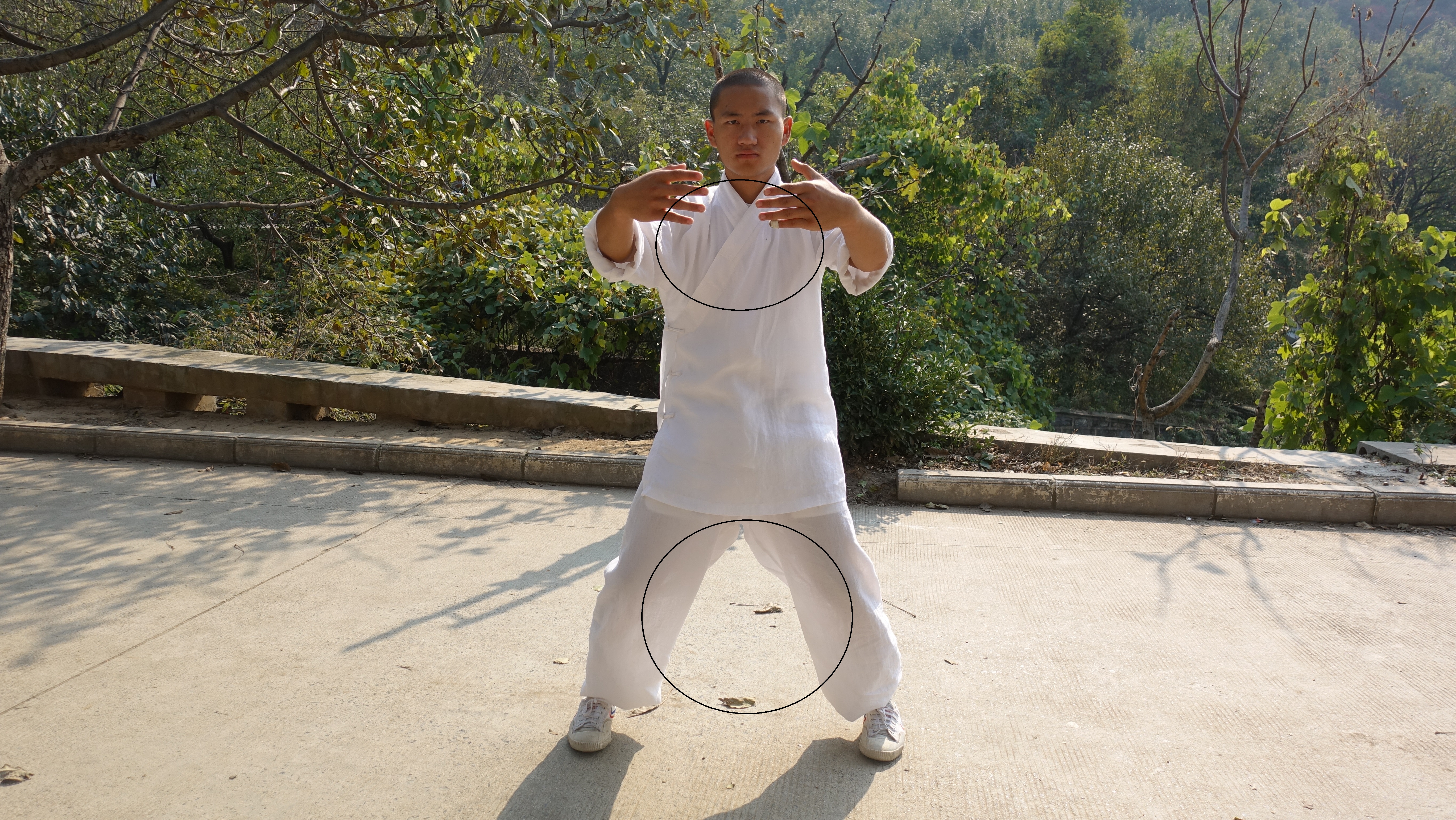
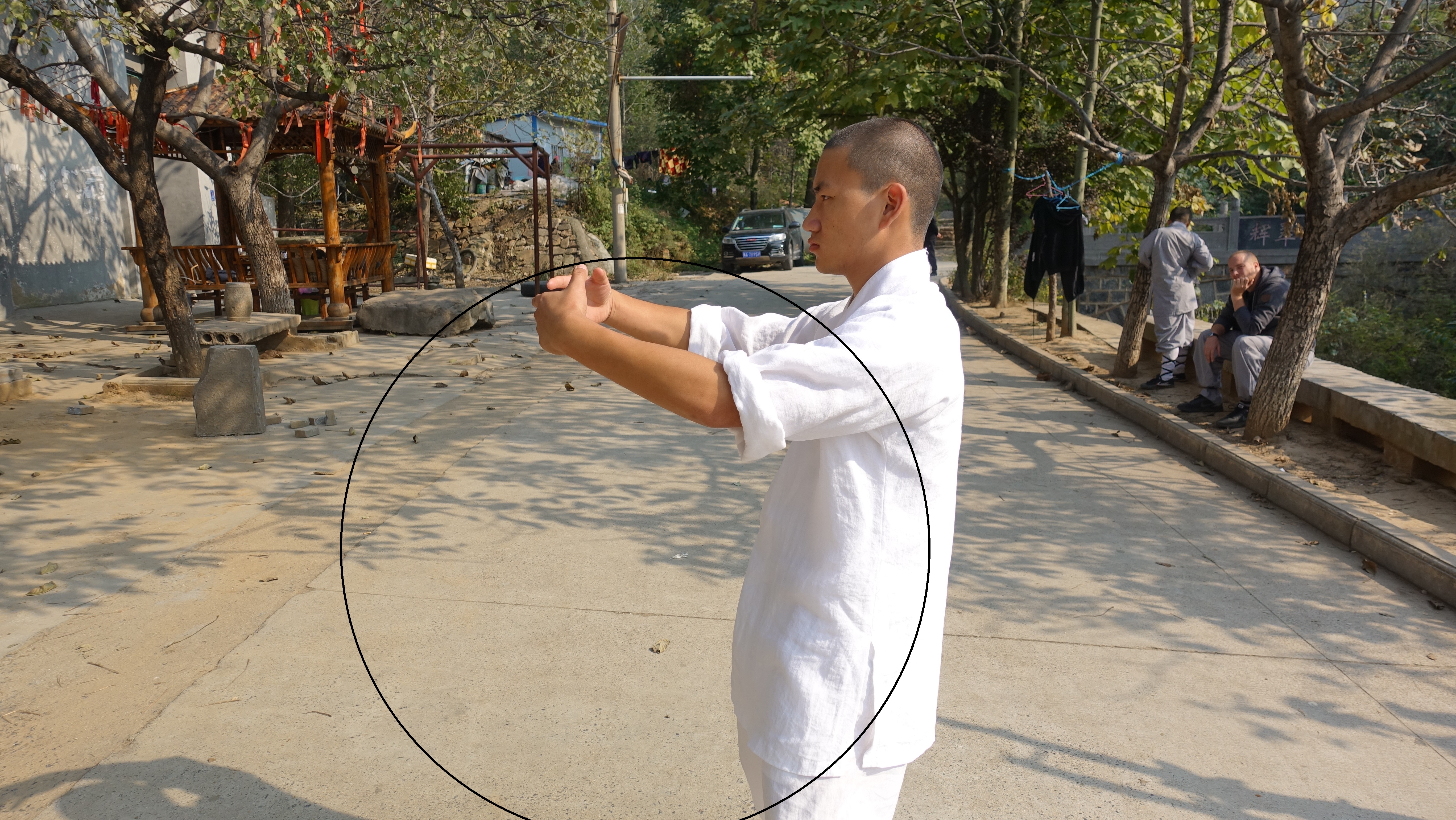
– at legs
– at arms and the ribcage
– The back and the floor
These circles symbolize the different “circular forces” that must be exercised by your body.
There are others that can be found in the books but these are the 3 Principaux, Master zhang also used to say “when we manage to exercise these 3 circular forces at the same time, our body becomes the circle “
3. Why a Circle ?
Chinese philosophy, Chinese martial arts have always used the image of the circle for their practice / interpretation … You can find very good articles on the subject.
As for me, I will explain it from a martial point of view with a simple example.
Take the stone bridges, we notice that most bridges are vaulted or arcuate simply because it is much more solid as well (I am not a specialist in physics, I will not explain why but we can easily find it on the net) and therefore the bridge is much more resistant and gives off a very strong force.
We also note that the bridge constantly withstands the force of gravity, it exerts a constant force, whether or not there is a car running through it, the bridge does not move.
We can therefore interpret this circle as a constant force that is always present and extremely powerful / resistant.
A very good exercise is to put yourself by 2, one executes the position while the other pushes it at the level of the arms and the legs. The one in position must resist but without pushing (the bridge does not push the car towards the sky when it crosses it).
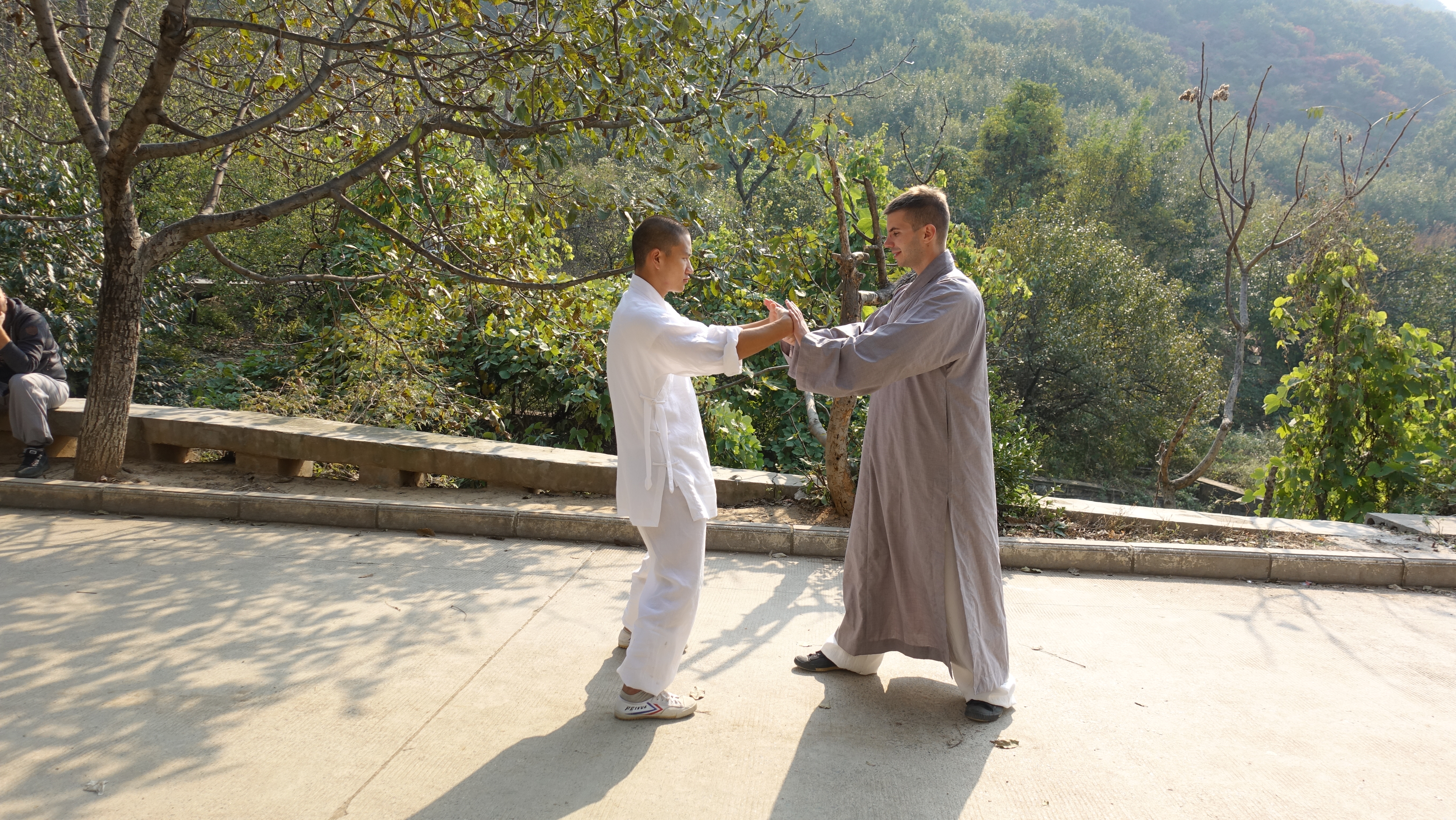
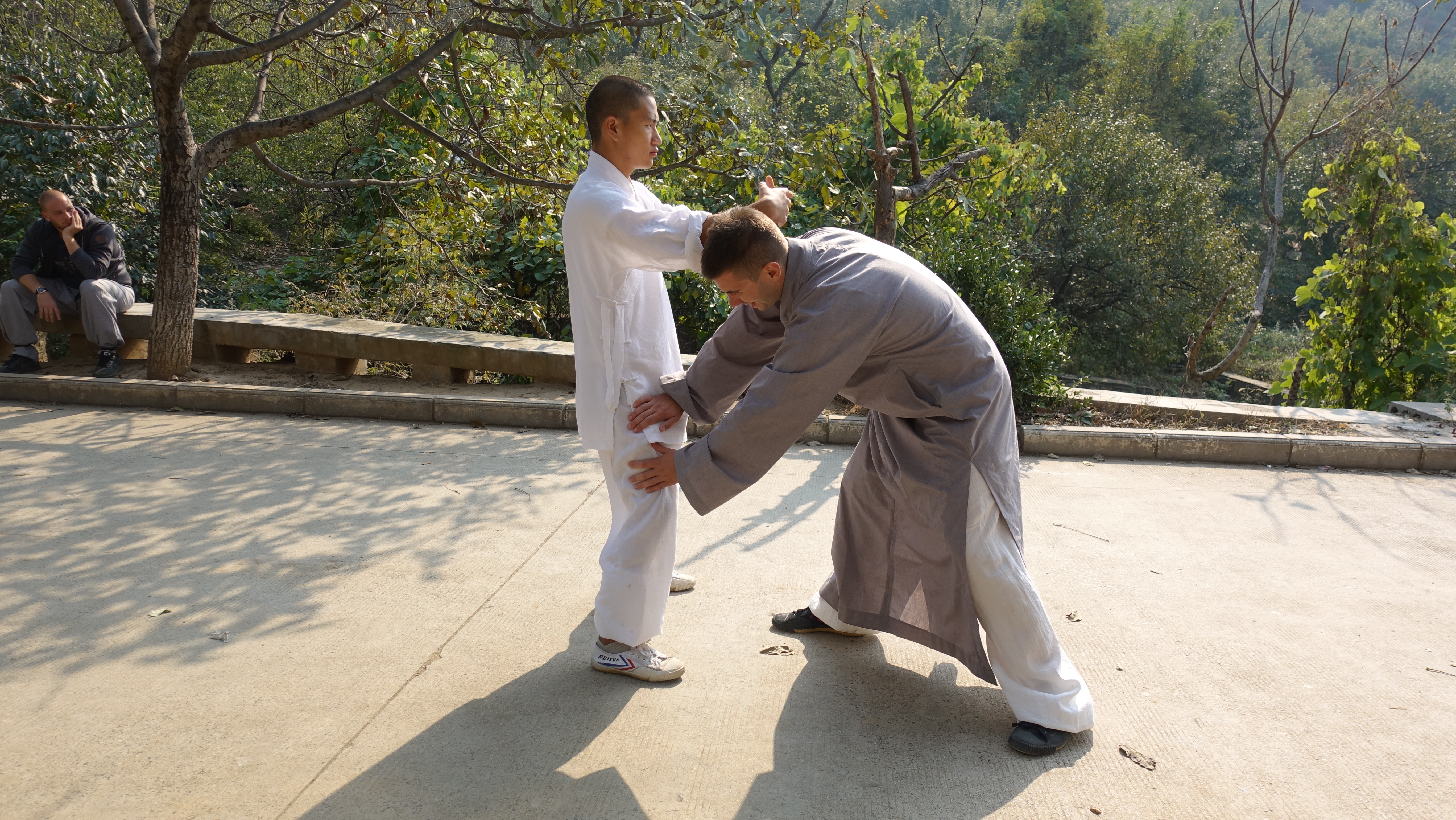
4. Circular forces and martial applications
I repeated several times the same vague term of “circular forces”, we will see what it means concretely.
First of all, one must simply say that a circle is nothing more than a series of small dots behind each other.
Specifically, the power that is released in these strikes is based on the same principle, we use a sequence of micro movements to be struck or perform a physical effort.
When you give a punch, the force does not just start from the forearm or the shoulder … it starts from your foot and then goes through the knee, the pelvis … go out by the fist.
This may seem obvious but I see very few people able to do it because it requires to synchronize each part of his body to the thousandth of a second to execute a movement.
We can simply imagine:
Your car breaks down and you have to push it. Are you going to push her as in picture 1 using just the strength of your arms or as in picture 2 using your whole body?
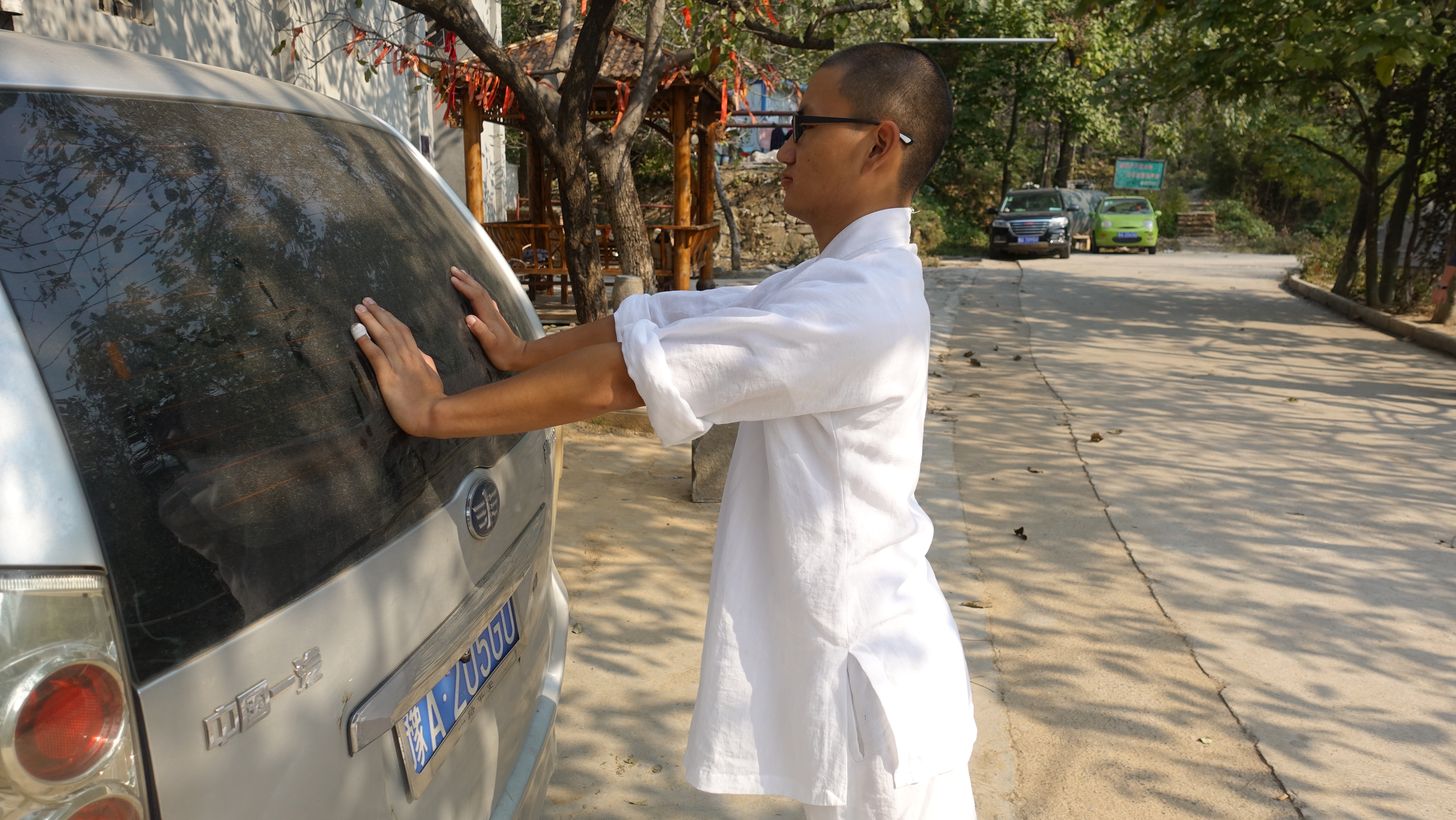
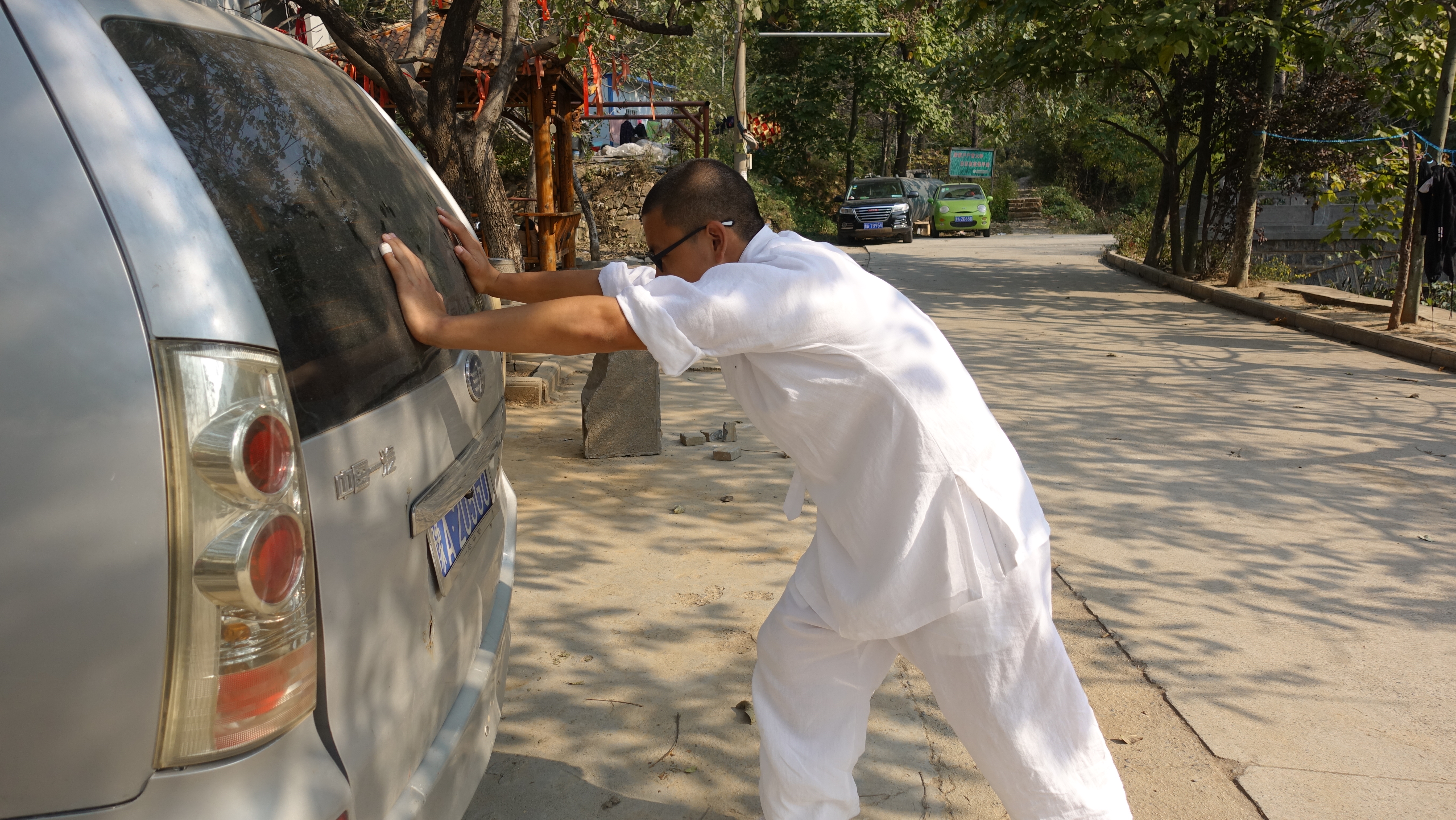
In this example, the answer seems obvious and there are still many examples of the same type (wear something very heavy …)
This way of using force in everyday life is already used naturally, but since martial arts are not natural movements (let alone the complexity of certain movements) that we have been practicing since childhood, it is very difficult to use it within our own practice.
That’s why working on this exercise can help you both in your Tai chi forms and in the outer arts and will improve the way you hit in combat …
Take a simple form that you practice regularly and try to practice it by applying this principle of Tai Ji, you will quickly see that you win both in speed and power (attention is very difficult to get to apply it it will take a lot of practice)
For those who want to improve their martial forms, I recommend a simple training:
Take a half an hour on your training, run this Ji Ben gong 1-2 minutes thinking all these explanations, then run your form by applying this Ji Ben Gong inside the form and so on !
This is only a summary of how we teach this first exercise, there are still many nuances and terms in Chinese that I did not address to avoid overloading at once, you are however the welcome to our school in Shaolin to learn more!

